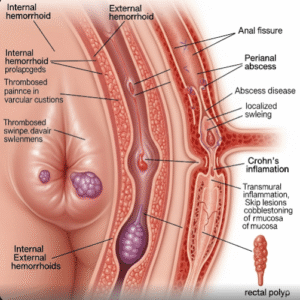Overview
Fainting, also known as syncope, is a sudden, temporary loss of consciousness caused by a drop in blood flow to the brain. It is usually brief, with the person regaining consciousness within seconds to minutes. While fainting is often benign, it can sometimes signal serious medical conditions. In Korea, hospitals, cardiology clinics, and emergency departments provide diagnosis, management, and preventive care for fainting episodes.
Key Facts
▶ Prevalence: Common across all age groups, especially adolescents, older adults, and individuals with cardiovascular or neurological conditions.
▶ Causes: Dehydration, low blood pressure, heart problems, stress, or neurological issues.
▶ Associated Symptoms: Lightheadedness, dizziness, blurred vision, nausea, palpitations, and sweating prior to fainting.
▶ Treatment Options in Korea: Medical evaluation, lifestyle modifications, medications, and interventional procedures if underlying conditions are detected.
▶ Urgency: Fainting accompanied by chest pain, palpitations, or injury requires immediate medical attention.
What is Fainting?
Fainting is the temporary loss of consciousness due to a reduction in cerebral blood flow, often triggered by physiological or emotional factors. It is usually sudden, brief, and followed by rapid recovery.
▶ Syncope Types:
- Vasovagal Syncope: Triggered by stress, pain, or standing too long.
- Cardiac Syncope: Caused by heart rhythm problems or structural heart disease.
- Orthostatic Hypotension: Sudden drop in blood pressure when standing up.
- Neurological Causes: Seizures, stroke, or transient ischemic attacks (TIAs).
▶ Prodromal Symptoms: Lightheadedness, sweating, nausea, blurred vision, or ringing in the ears may precede fainting.
▶ Recovery: Most fainting episodes resolve spontaneously within a few minutes.
Note: Identifying the underlying cause is critical to prevent recurrence and avoid complications.
What Symptoms Are Related to Fainting?
▶ Lightheadedness or Dizziness: Feeling unsteady before losing consciousness.
▶ Nausea or Vomiting: Common pre-fainting symptom.
▶ Pale or Clammy Skin: Indicating reduced blood flow.
▶ Blurred Vision or Tunnel Vision: Often occurs just before fainting.
▶ Rapid or Slow Heartbeat: Palpitations may precede syncope.
▶ Sweating: Excessive perspiration due to autonomic nervous system response.
▶ Confusion or Disorientation: Brief after regaining consciousness.
▶ Head Injury Risk: Falling during fainting can cause injuries.
What Causes / Possible Causes
Fainting can result from cardiovascular, neurological, metabolic, or situational factors:
▶ Vasovagal Syncope: Triggered by pain, fear, prolonged standing, or emotional stress.
▶ Heart-Related Causes: Arrhythmias, heart valve disorders, or heart failure.
▶ Low Blood Pressure (Hypotension): Sudden drops when standing or due to dehydration.
▶ Dehydration: Insufficient fluid intake reduces blood volume.
▶ Blood Loss or Anemia: Low hemoglobin or acute bleeding reduces oxygen supply to the brain.
▶ Neurological Conditions: Seizures, stroke, or transient ischemic attacks (TIAs).
▶ Medications: Diuretics, blood pressure medications, or vasodilators can trigger fainting.
▶ Situational Triggers: Coughing, urination, swallowing, or exposure to heat.
Note: Accurate diagnosis is crucial to distinguish between benign and serious causes.
When Should I See a Doctor?
▶ Recurrent Fainting: Multiple episodes require evaluation to determine cause.
▶ Heart Symptoms: Chest pain, palpitations, or shortness of breath accompanying fainting.
▶ Injury Risk: Fainting causing falls, fractures, or head trauma.
▶ Sudden Onset Without Warning: Particularly in older adults or those with heart disease.
▶ Family History: Sudden cardiac death or unexplained fainting in relatives.
▶ Children or Adolescents: Fainting during exertion, play, or school activities.
▶ Associated Neurological Symptoms: Weakness, confusion, or seizures.
Tip: Korean hospitals provide comprehensive evaluation including ECG, echocardiography, blood tests, and neurological assessment to determine the underlying cause.
Care and Treatment
Management of fainting depends on cause, frequency, and severity:
▶ Immediate Care: Lay the person flat, elevate legs, and ensure a safe environment to prevent injury.
▶ Hydration: Adequate fluid intake prevents dehydration-related syncope.
▶ Lifestyle Adjustments: Avoid prolonged standing, sudden posture changes, or triggers.
▶ Compression Stockings: Help prevent blood pooling in the legs in orthostatic hypotension.
▶ Medications: Adjust or prescribe drugs to manage blood pressure, heart rhythm, or underlying conditions.
▶ Physical Counterpressure Maneuvers: Leg crossing or tensing muscles to maintain blood flow.
▶ Medical Monitoring: Regular follow-up for recurrent episodes or high-risk individuals.
▶ Patient Education: Recognize prodromal symptoms and take preventive actions.
Treatment Options in Korea
Medical Evaluation:
▶ Cardiovascular Assessment: ECG, Holter monitoring, echocardiography, or stress testing.
▶ Neurological Evaluation: EEG, brain imaging, or neurological exam for seizures or stroke.
▶ Blood Tests: Check for anemia, electrolyte imbalances, or metabolic disorders.
▶ Tilt Table Test: Diagnose orthostatic hypotension or vasovagal syncope.
▶ Specialist Consultation: Cardiologists, neurologists, and emergency physicians provide targeted care.
Advanced Therapies:
▶ Pacemaker or Implantable Cardioverter-Defibrillator (ICD): For severe heart rhythm-related syncope.
▶ Medication Adjustments: Optimize therapy for blood pressure, heart disease, or neurological conditions.
▶ Behavioral and Lifestyle Programs: Prevent triggers, improve hydration, and maintain cardiovascular health.
▶ Multidisciplinary Care: Integrated approach combining cardiology, neurology, and rehabilitation services.
Rehabilitation & Support:
▶ Patient Education: Recognizing warning signs, preventing injury, and managing triggers.
▶ Follow-Up Care: Monitoring treatment efficacy and adjusting interventions.
▶ Specialist Clinics: Korean hospitals provide comprehensive syncope programs to diagnose, treat, and prevent recurrent fainting episodes.
Outcome: With early recognition and comprehensive treatment in Korea, fainting can be effectively managed, reducing recurrence, preventing injuries, and improving overall safety and quality of life.













